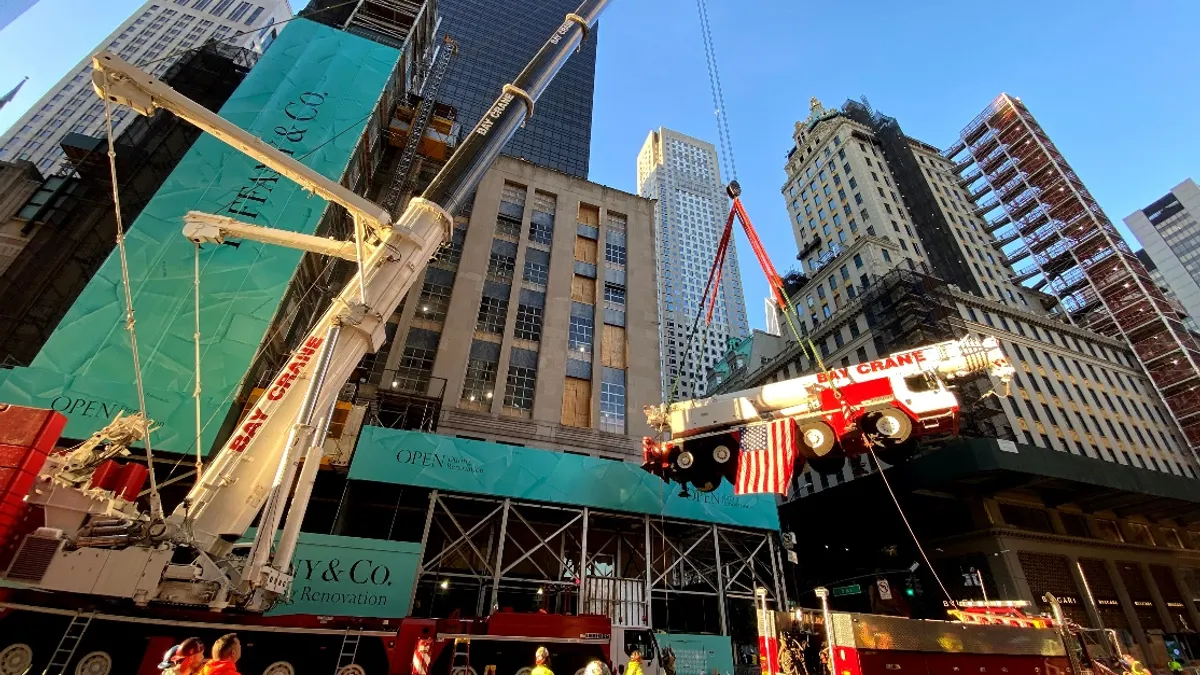Longtime New Yorkers like to quip that they can spot the tourists a mile away: They’re the ones with the crooked necks, from gawking at the towering buildings above them.
But even the most jaded locals had reason to lift their eyes to the concrete heavens recently. In fact, they had two, when one giant crane lifted another, flew it seven stories through the air and deposited it on top of the iconic Tiffany & Co. building in midtown Manhattan.
The smaller fully counterweighted, 205,000-pound LTM 1130 crane was employed building a three-floor, glass-walled addition that will crown the existing limestone-and-granite historic building that Audrey Hepburn and George Peppard made even more famous in the 1961 movie "Breakfast at Tiffany’s."
To put the LTM 1130 in place, New Jersey-based McLaren Engineering Group leveraged an even larger crane, the 500-ton Liebherr LTM 1500 – a piece of equipment its manufacturer boasts is the “most successful large crane of all time”— and 363,800 pounds of counterweight ballast.
But that crane had to be assembled at street level before it could lift the more diminutive LTM 1130 into place.
In order to do that, McLaren said it had to put together seven crane plans for the project, designed rigging to lift the crane, designed rooftop dunnage to support the crane on the roof, and analyzed the building for imposed loads, which called for the reinforcement of existing building columns to carry the weight.
During the prebid process, McLaren worked with the contractor, Orange County Ironworks, vetting a geometry and capacity checks concept for the cranes and then a preliminary look into building reserve capacity.
"McLaren worked with Orange County Ironworks taking space, time and budget into consideration, to develop unconventional methods of crane engineering to figure out how to work within New York City’s tight building space constraints," said Jon T. Skinner, vice president of construction engineering at McLaren.
The entire operation not only helped the project work within the tight confines of midtown, it also alleviated the need to stop work at the site during the holidays late last year. New York City prohibits cranes and work in the streets in most areas the week starting before Thanksgiving until after the beginning of the new year. Getting the rooftop crane in place allowed Orange County Ironworks to continue uninterrupted through the holidays, saving time and millions of dollars on the project, according to McLaren.
The smaller crane has since been safely returned to the ground.














